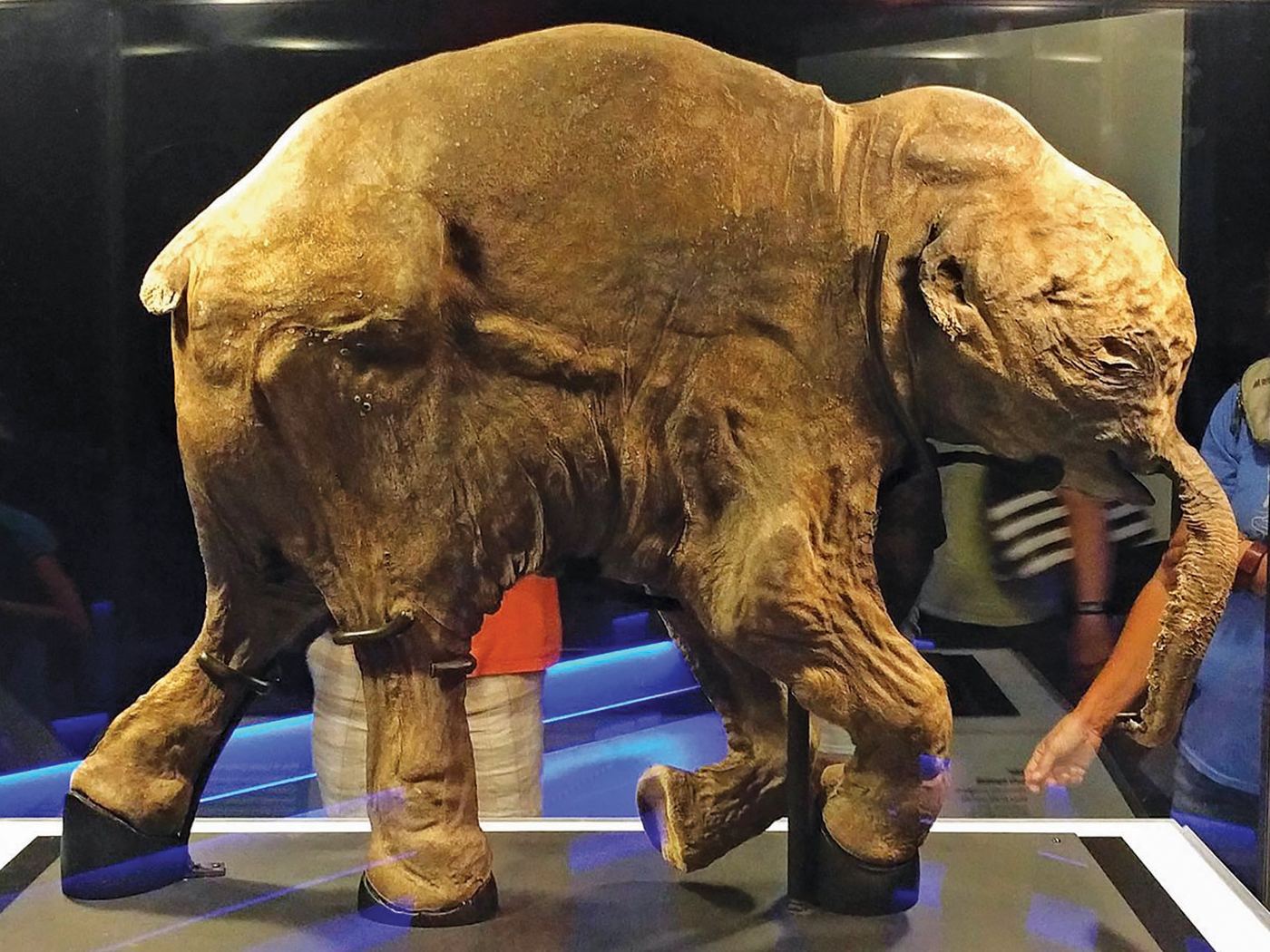Scientists recently discovered a large batch of manganese nodules on the floor of the Atlantic Ocean.1 These metallic pellets provide strong evidence that most seafloor sediments were deposited rapidly, not slowly and gradually over millions of years. Are these nodules evidence of the Genesis Flood?
Manganese nodules are found scattered on the ocean floor. Though generally composed of manganese (hence the name), they can also be made of iron, nickel, copper, and other metals. This recently discovered batch, located several hundred miles east of Barbados, is the largest yet discovered in the Atlantic Ocean.1
These nodules are thought to form when chemicals dissolved in seawater precipitate onto a small object, such as a shark tooth, lying on the ocean floor. Manganese and iron from underwater volcanic eruptions can also contribute to nodule growth, as can the presence of algae and bacteria.2,3
Based upon radioisotope dating methods, secular scientists claim that nodules grow at the extremely slow rate of just a few millimeters per million years.2 Yet manganese nodules have consistently been observed growing in lakes and man-made reservoirs, as well as on debris fragments from World Wars I and II, at rates hundreds of thousands of times faster than these calculated rates.3,4,5 This is just one more indication that there are serious problems with radioisotope dating methods!
Two key observations about manganese nodules require explanation. First, nodules are thought to cease growing once buried beneath more than a few centimeters of sediment.6,7
Second, they are typically found only in the uppermost 50 centimeters (about 20 inches) of sediment.2 Scientists have drilled and extracted cores from seafloor sediments, and manganese nodules are sometimes found within the deeper sections of these sediment cores. Yet even most of these buried nodules lie within the uppermost core sections, and the ones found at greater depths are often quite small. Moreover, many of these deeper nodules may have actually originated from the surface sediments, since nodules sometimes fall down drill holes during the drilling process.6,7
The general absence of nodules in the deeper sediments does not seem to be due to chemical dissolution, as even secular scientists acknowledge that this explanation does not fit the data.7 Secular scientists argue that perhaps nodules are found in the uppermost sediments because surface-dwelling organisms or bottom ocean currents have recently begun disturbing the sediments so as to prevent nodule burial, thereby allowing them to grow to the sizes we see at the sediment surface.2,6 But if "the present is the key to the past," as they claim, why then has such a disturbance of the sediments occurred in only the (relatively) recent past? Why have these disturbances not occurred for many tens of millions of years, so that nodules are found consistently at all depths within the seafloor sediments?
On the other hand, creation scientists have a very simple explanation for these observations: Nodules are generally absent from the deeper sediments because these sediments were deposited far too rapidly for nodule growth to occur!8 Toward the end of the Genesis Flood, sheets of water receding off the continents would have rapidly eroded and dumped enormous amounts of sediment into the ocean basins. The presence of geological features called planation surfaces on every continent is very difficult for uniformitarian scientists to explain, but it is perfectly consistent with the Flood's rapid erosion and deposition of sediment.9 Furthermore, the warm, mineral-rich oceans during and after the Flood would have been conducive to the growth of phytoplankton such as algae. Since foraminifera feed on phytoplankton, they would have greatly increased in number after the Flood, and their abundant remains would also have contributed to the rapidly accumulating sediments.10
In the millennia after the Flood, sediment deposition would have eventually slowed to today's "slow and gradual" rates.11 Hence, nodules are found mainly in the uppermost sediment layers because these upper layers were deposited slowly enough to allow nodules to grow.
Rapid deposition invalidates the extremely old ages that secular scientists have assigned to the seafloor sediments, since they are assumed to have been deposited slowly and gradually over millions of years. It also raises a serious cloud of doubt over the ages assigned to the deep ice cores from Antarctica and Greenland, as these ages are ultimately tied, via a complicated network of circular reasoning, to the ages for the seafloor sediments!12,13
Batches of manganese nodules are just one of many geological features that are difficult for secular scientists to explain, but they make sense in light of the Genesis Flood.
References
- Oskin, B. Vast Bed of Metal Balls Found in Deep Sea. Live Science. Posted on livescience.com February 17, 2015, accessed February 19, 2015.
- Somayajulu, B. L. K. 2000. Growth rates of oceanic manganese nodules: Implications to their genesis, palaeo-earth environment and resource potential. Current Science. 78 (3): 300-308.
- Dean, W. E., W. S. Moore, and K. H. Nealson. 1981. Manganese Cycles and the Origin of Manganese Nodules, Oneida Lake, New York, U. S. A. Chemical Geology. 34 (1-2): 53-64.
- Shcherbov, B. L. and V. D. Strakhovenko. 2006. Nodules in Sediments of an Artificial Reservoir in the Altai Territory. Lithology and Mineral Resources. 41 (1): 45-53.
- Lalomov, A. V. 2007. Mineral Deposits as an Example of Geological Rates. Creation Research Society Quarterly. 44 (1): 64-66.
- Glasby, G. P. 1978. Deep-sea manganese nodules in the stratigraphic record: evidence from DSDP cores. Marine Geology. 28 (1-2): 51-64.
- Pattan, J. N. and G. Parthiban. 2007. Do manganese nodules grow or dissolve after burial? Results from the Central Indian Ocean Basin. Journal of Asian Earth Sciences. 30 (5-6): 696-705.
- Patrick, K. 2010. Manganese nodules and the age of the ocean floor. Journal of Creation. 24 (3): 82-86.
- Oard, M. 2006. It's plain to see: Flat surfaces are strong evidence for the Genesis Flood. Creation. 28 (2): 34-37.
- Vardiman, L. 1997. Global Warming and the Flood. Acts & Facts. 26 (12).
- Vardiman, L. 1996. Sea-Floor Sediment and the Age of the Earth. El Cajon, CA: Institute for Creation Research.
- Hebert, J. 2014. Circular Reasoning in the Dating of Deep Seafloor Sediments and Ice Cores: The Orbital Tuning Method. Answers Research Journal. 7: 297-309.
- Hebert, J. and T. Clarey. 2015. Ice Cores, Seafloor Sediments, and the Age of the Earth, Part 3. Acts & Facts. 44 (1): 10-13.
Image credit: Copyright © 2010 USGS. Adapted for use in accordance with federal copyright (fair use doctrine) law. Usage by ICR does not imply endorsement of copyright holders.
*Dr. Hebert is Research Associate at the Institute for Creation Research and received his Ph.D. in Physics from the University of Texas at Dallas.
Article posted March 5, 2015.










